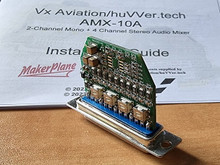DennisRhodes
Well Known Member
I see planes with a "Radio" switch, switching between 2 radios, when there is no audio panel. I am wondering what is being switched. Is it just power? How is the audio and transmit functions being dealt with? Is it switching a relay that controls which radio is transmitting? Each radio has its own antenna, so either can be used, but with only one pilot headset, I am guessing it might control the PTT button to a specific radio, but then the mic inputs would need to be paralleled.....
Am I overcomplicating this?
______________
Generally the mike and PTT is switched on a Double pole , Double throw toggle switch. you would still have audio from both but could always turn the volume down on one . If both radios have an Tx light you can verify the switch position each time you Tx. Poor Mans audio panel BUT it does have good application in a small panel space AC.
Am I overcomplicating this?
______________
Generally the mike and PTT is switched on a Double pole , Double throw toggle switch. you would still have audio from both but could always turn the volume down on one . If both radios have an Tx light you can verify the switch position each time you Tx. Poor Mans audio panel BUT it does have good application in a small panel space AC.
Last edited by a moderator:





